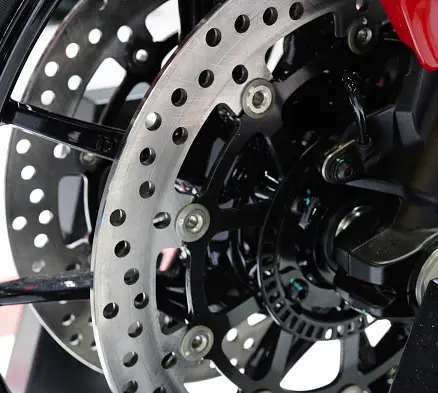October 15, 2023
Do rear disc brakes wear out faster?
- Driving Habits: How you drive your vehicle can have a significant impact on brake wear. Frequent hard braking, aggressive driving, and heavy loads can all contribute to faster brake wear, regardless of whether the brakes are located at the front or rear.
- Vehicle Design: The design of a vehicle’s braking system can vary from one model to another. Some vehicles have larger front brakes, while others have larger rear brakes. The balance between front and rear brake sizes is designed to optimize braking performance and wear characteristics for that specific vehicle.
- Brake Material: The type of brake pads and rotors used can also affect wear rates. High-quality brake components tend to last longer than lower-quality ones. Additionally, some vehicles may come equipped with performance-oriented brake components that wear out faster but provide better stopping power.
- Maintenance: Regular maintenance, including brake pad and rotor inspections and replacements as needed, can significantly extend the lifespan of both front and rear disc brakes. Neglecting maintenance can lead to premature wear and decreased brake performance.
- Brake Bias: Brake bias refers to the distribution of braking force between the front and rear brakes. Some vehicles may have a more pronounced front brake bias, while others have a more balanced distribution. The brake bias can affect wear patterns.
- Environmental Conditions: Driving in extreme conditions, such as heavy rain, snow, or off-road environments, can accelerate brake wear. These conditions can introduce contaminants to the brake system or require more frequent braking.
In summary, rear disc brakes don’t inherently wear out faster than front disc brakes. The wear rate depends on several factors, and proper maintenance and driving habits play a crucial role in determining how long your brakes will last. Regular inspections and addressing any issues promptly can help ensure the longevity of your vehicle’s braking system.

How long should rear brake discs last?
The lifespan of rear brake discs (rotors) can vary widely depending on several factors, including driving habits, vehicle type, quality of brake components, and environmental conditions. On average, rear brake discs can last anywhere from 30,000 to 70,000 miles (48,000 to 112,000 kilometers) or even longer in some cases. Here are some factors to consider when estimating the longevity of rear brake discs:
- Driving Habits: Aggressive driving, frequent hard braking, and towing heavy loads can all accelerate brake disc wear. If you drive under such conditions, your brake discs may wear out more quickly.
- Vehicle Type: The type of vehicle you drive can impact brake disc longevity. Heavier vehicles, like trucks and SUVs, tend to put more strain on the brakes and may require more frequent brake disc replacements compared to lighter passenger cars.
- Quality of Brake Components: The quality of the brake discs and brake pads used can significantly affect their lifespan. Higher-quality, OEM (Original Equipment Manufacturer) or premium aftermarket components often last longer than lower-quality alternatives.
- Environmental Conditions: Driving in harsh conditions, such as frequent exposure to salt on snowy roads or driving in areas with a lot of dust and debris, can accelerate brake disc wear.
- Maintenance: Regular brake maintenance is essential to ensure the longevity of your brake discs. Neglecting to change brake pads when they are worn can lead to premature wear of the brake discs. Additionally, having the brake system inspected and serviced as needed can help catch issues before they become severe.
- Brake Material: Some vehicles come equipped with performance-oriented brake components that may wear out more quickly but provide better stopping power. The type of brake material used can influence disc wear.
- Driving Conditions: City driving with frequent stop-and-go traffic can put more stress on the brakes and result in faster wear compared to highway driving with fewer stops.
It’s important to note that the front brake discs often wear out faster than the rear ones because the front brakes handle a larger portion of the braking force. However, both front and rear brake discs should be inspected regularly, and they should be replaced when they reach their minimum allowable thickness or show signs of significant wear, scoring, or warping.
To determine the specific lifespan of your rear brake discs, consult your vehicle’s owner’s manual for manufacturer-recommended maintenance intervals and inspect the brakes during regular service visits. Replacing brake discs when necessary is essential for your safety and the optimal performance of your vehicle’s braking system.
